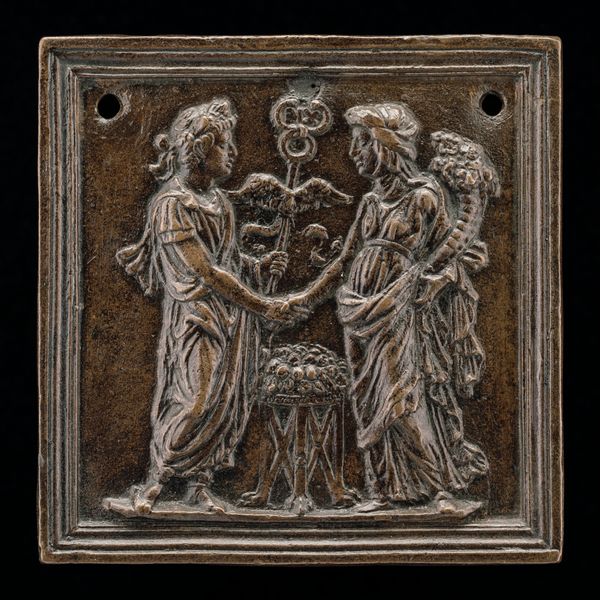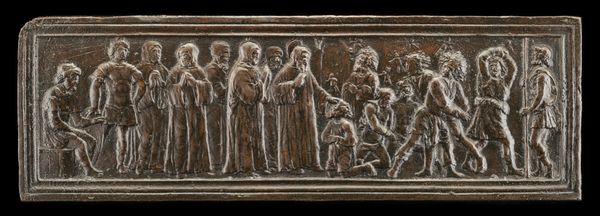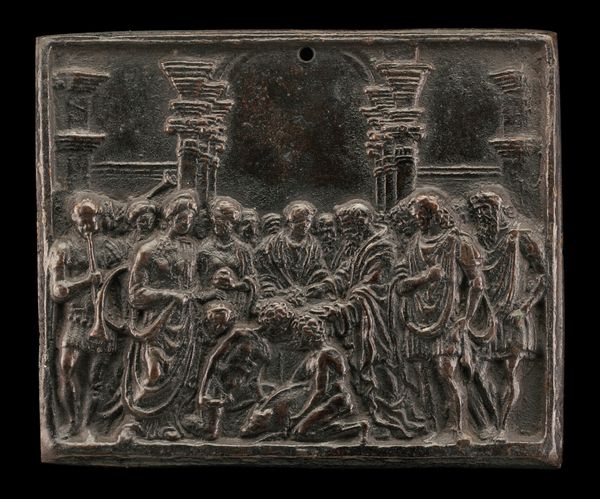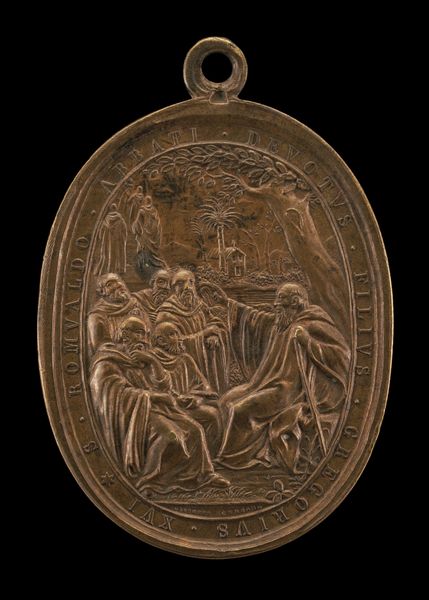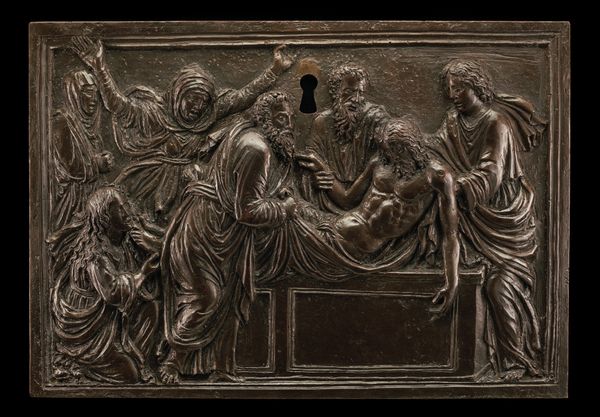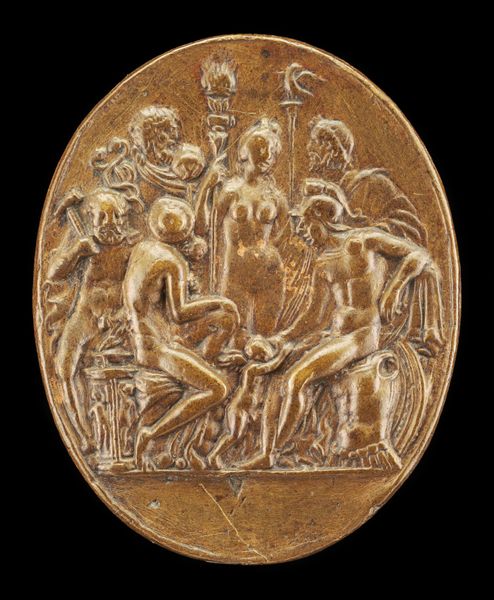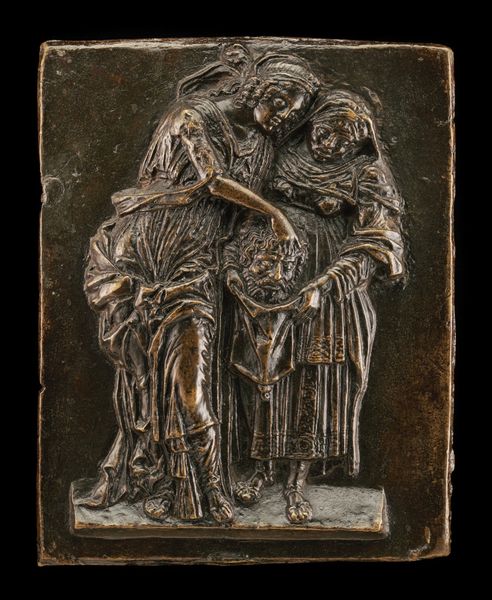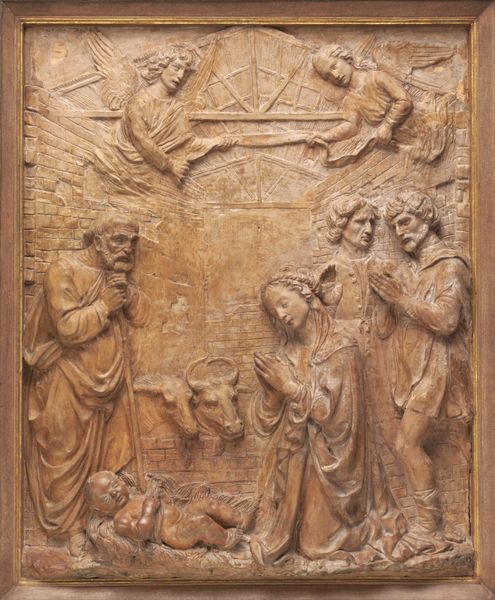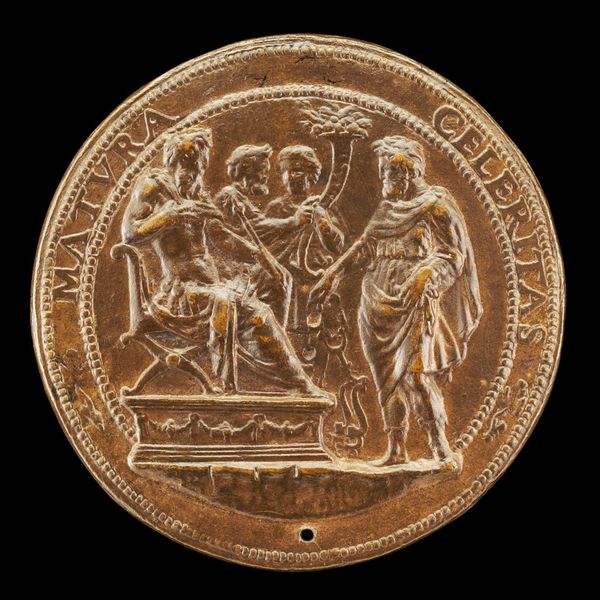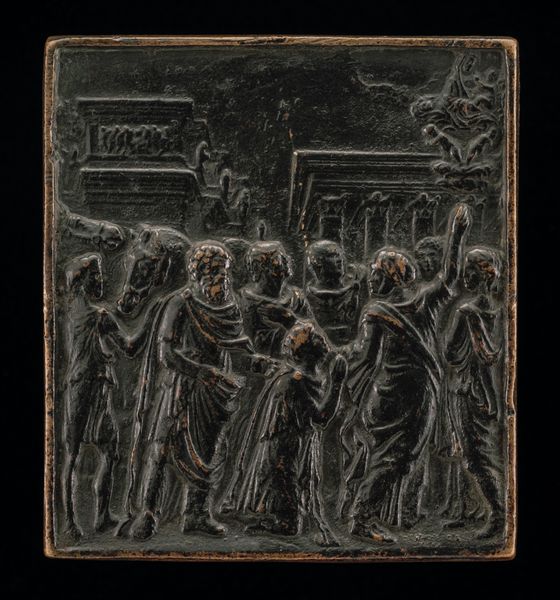
relief, bronze, sculpture
#
narrative-art
#
sculpture
#
relief
#
bronze
#
figuration
#
sculpture
#
history-painting
#
italian-renaissance
Dimensions: overall: 7.6 × 7.82 cm (3 × 3 1/16 in.) gross weight: 284.21 gr (0.627 lb.)
Copyright: National Gallery of Art: CC0 1.0
Curator: Let's focus on Andrea Briosco's, known as Riccio, bronze relief, "The Entombment." Its intimate scale really amplifies the drama, wouldn’t you agree? Editor: Absolutely, the way that the artist depicts this scene of grief and mourning is extremely compelling. You're immediately drawn into the deep despair. I wonder, what were the socio-political motivations behind creating something with such powerful, emotional impact at this time? Curator: Considering Riccio’s milieu, Northern Italy during the Renaissance, the rise of humanist philosophy is really impossible to ignore. This narrative presents an interesting commentary on faith, sacrifice, and human relationships through a decidedly Renaissance lens, grappling with divine power structures through human interactions. Editor: I agree. And the artistry! I am impressed with how the figures interact with each other within this constrained space. It looks like such a complex orchestration. You feel the raw pain in their contorted faces and expressive gestures, really reflecting the agony and disorientation inherent in experiences of loss. The bodies are so physical; so present. Curator: That emphasis on physicality absolutely tracks with the burgeoning interest in classical forms during the Renaissance. While, undeniably devotional, these sculpted bronze pieces found eager audiences in private collections, so a clear status element came into play, too. Beyond personal piety, these displays bolstered personal branding and cultural cache. Editor: The political undertones seem so relevant, then and now. This image is rife with implications, really questioning authority, tradition, even faith itself. It definitely encourages critical examination. How do you think audiences interpreted such themes back then, and how can they translate to modern understandings? Curator: Precisely! It's a testament to art's ability to spark dialogue and challenge norms across temporal and social divides. The sculpture also forces a space to re-examine faith’s relationship with political control throughout art history. Editor: Agreed, it really hits at something resonant that persists, demanding attention from both artistic and political perspectives. Thank you!
Comments
No comments
Be the first to comment and join the conversation on the ultimate creative platform.
